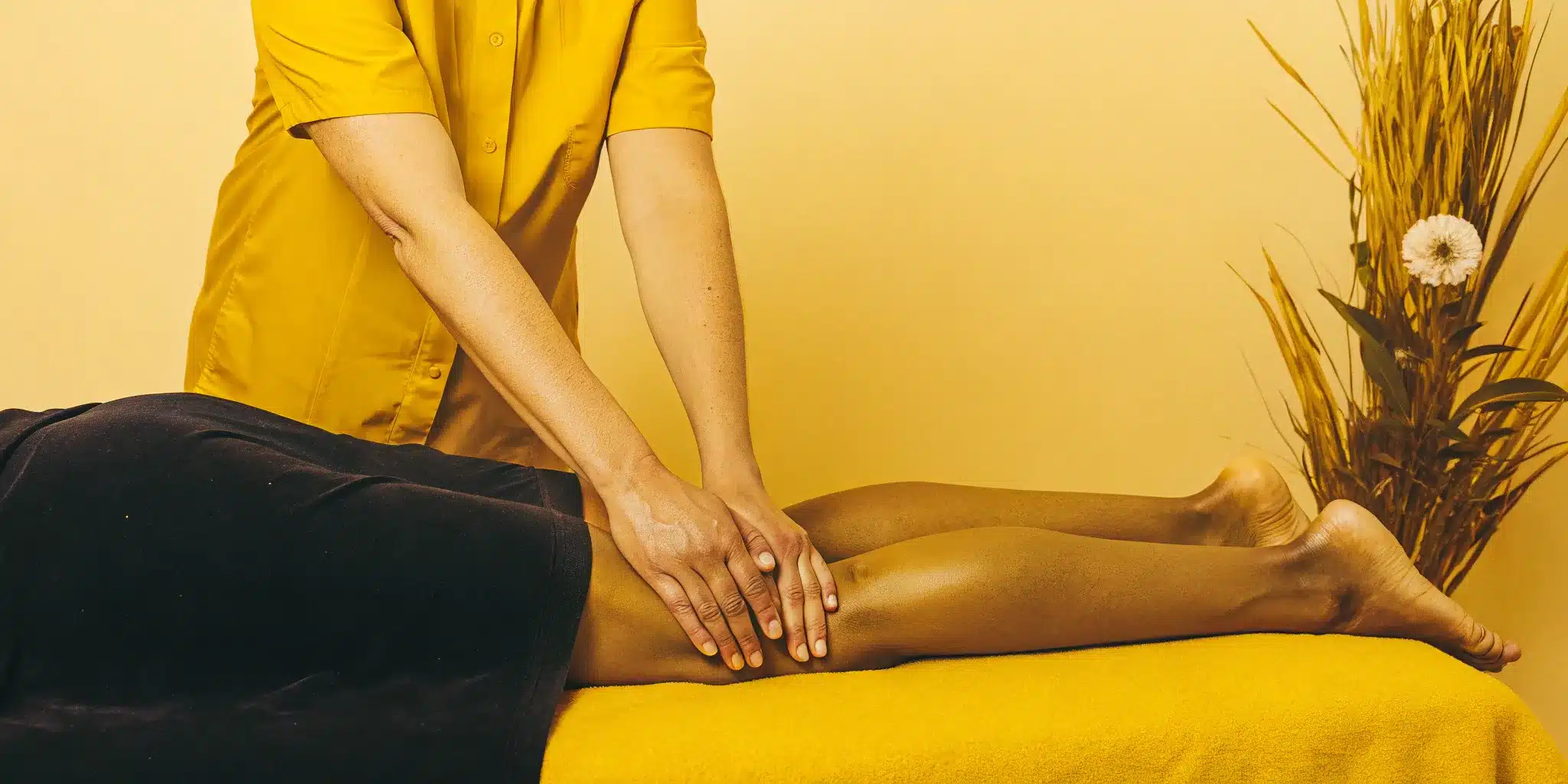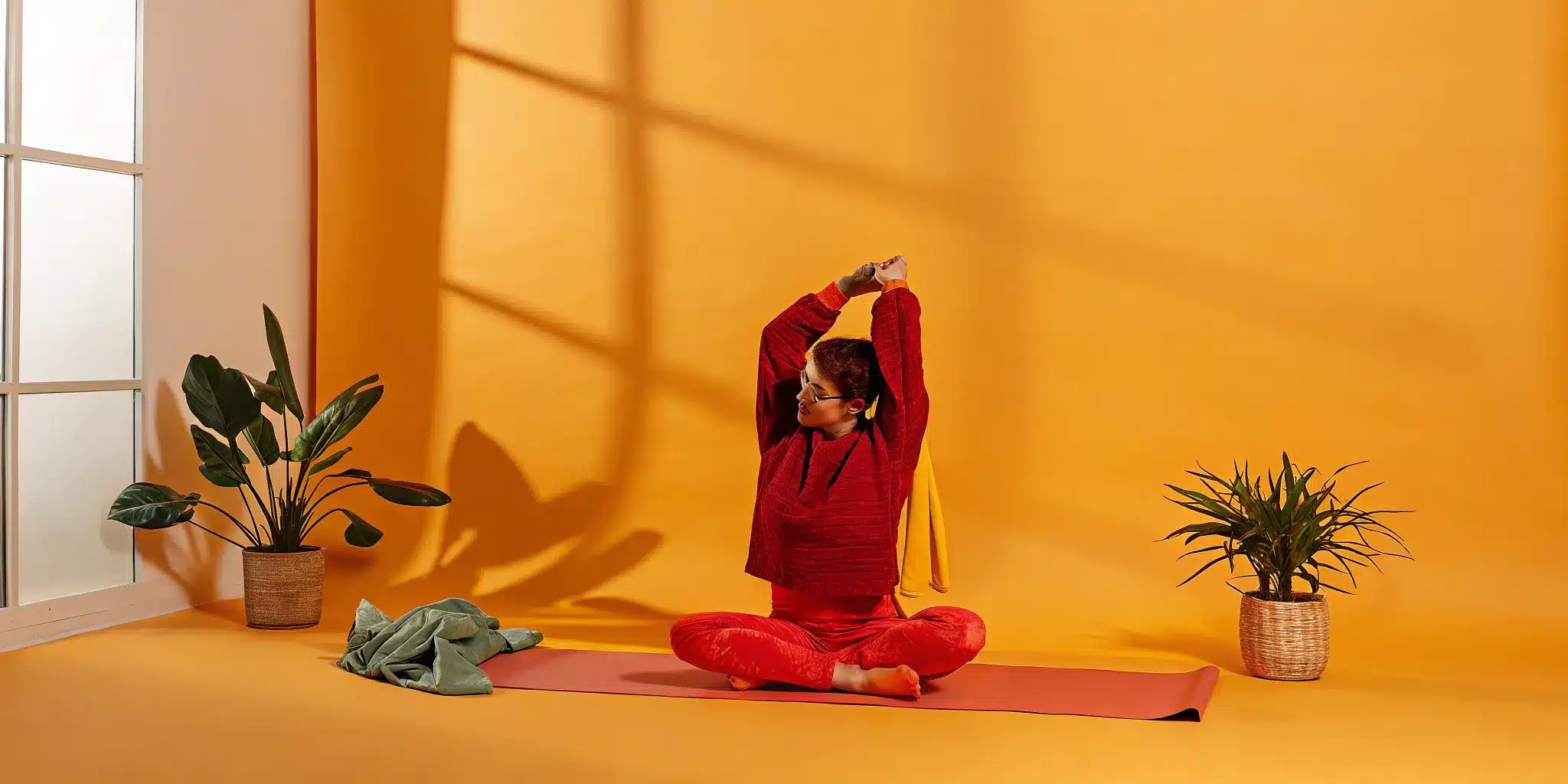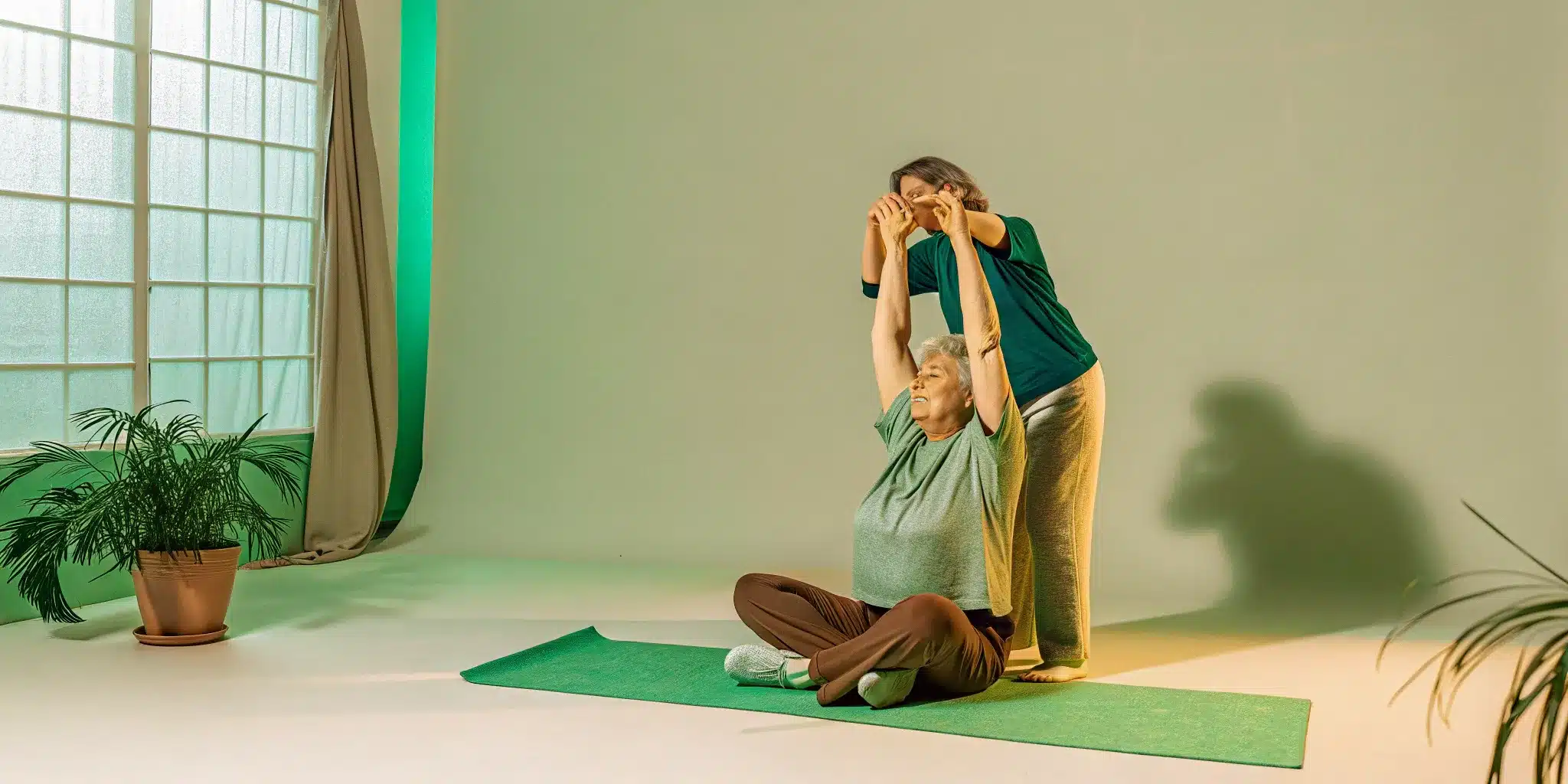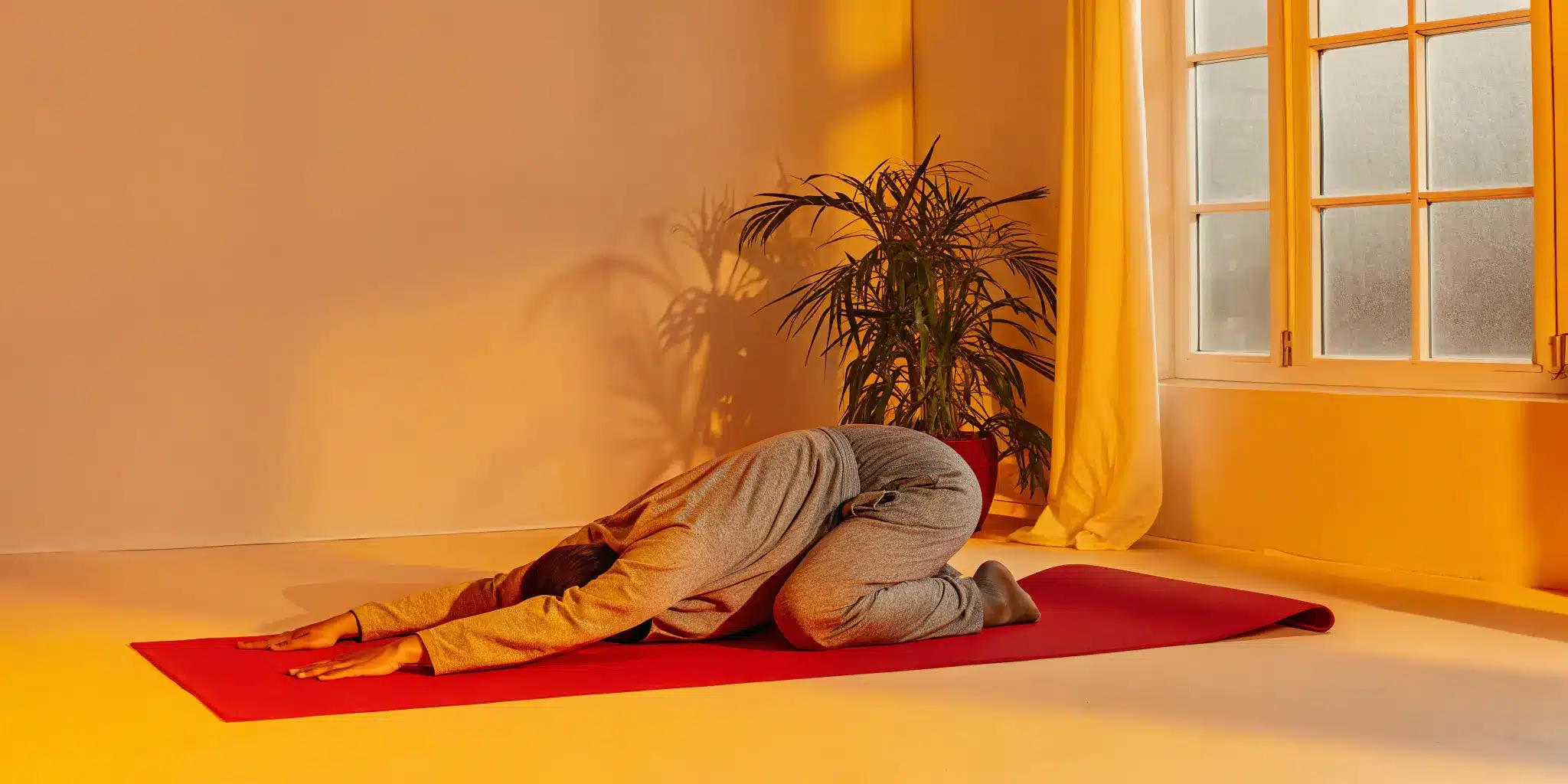Think of stretching as a powerful tool in your wellness toolkit. When used correctly, it can help you move freely and live with less pain. But like any tool, using it the wrong way can be dangerous. Pushing through sharp pain or stretching an inflamed injury isn’t a sign of toughness; it’s a recipe for a setback. True body awareness means learning to listen to the signals your body sends. It’s about understanding that sometimes, the smartest thing you can do for your mobility is to not stretch at all. We’ll walk you through the essential contraindications of stretching so you can make informed, safe choices for your long-term health.
Key Takeaways
- Press pause when your body needs to heal: Stretching isn’t a cure-all. Avoid stretching fresh injuries, inflamed joints, or infected areas to allow your body to recover properly. If you have a chronic condition, talk to a professional to create a safe movement plan.
- Distinguish between a good stretch and a warning sign: A productive stretch feels like a mild pull, not a sharp pain. If you experience stabbing sensations, numbness, or tingling, stop immediately—your body is telling you to back off.
- Explore alternatives to traditional stretching: If stretching is painful, you have other options for staying mobile. Low-impact activities, modified movements, and gentle practices like Tai Chi can help you improve flexibility and feel good without causing strain.
Is Stretching Always a Good Idea?
Stretching is often presented as a universal solution for aches, pains, and stiffness. While it offers incredible benefits for mobility and can feel amazing, it’s not a one-size-fits-all remedy. Like any form of physical activity, there are times when stretching can be unhelpful or even harmful. Understanding the difference is key to moving well and feeling your best. Let’s clear up some common confusion and look at when you should press pause on your stretching routine.
Common Stretching Myths
We’ve all heard the advice to stretch before a workout or to ease sore muscles, but some of this conventional wisdom is outdated. One of the biggest myths is that stretching is a foolproof way to prevent injuries. While it’s true that stretching absolutely improves your flexibility and range of motion, it doesn’t make you invincible. Another common belief is that holding a deep, static stretch is the best way to warm up. However, studies have shown that this type of stretching before exercise doesn’t necessarily reduce your risk of injury. And if you’re stretching to relieve that day-after-a-workout soreness? It may feel good in the moment, but it doesn’t significantly affect delayed onset muscle soreness (DOMS).
When Stretching Does More Harm Than Good
Knowing when to avoid stretching is just as important as knowing how to do it. If you’re dealing with a fresh injury, like a recent muscle pull or sprain, stretching it is a bad idea. Your body is trying to form scar tissue to heal, and stretching the area too soon can disrupt that process, leading to a longer recovery. The golden rule of stretching is that it should never be painful. A gentle pull is fine, but sharp, stabbing pain is a red flag. If you feel pins and needles or numbness, you could be putting pressure on a nerve and should stop immediately. You should also avoid stretching any area with an active infection, as it could make the situation worse.
Health Conditions That Don’t Mix with Stretching
Stretching is one of the best things you can do for your body, offering everything from pain relief to better mobility. But it’s not a one-size-fits-all solution, and it’s definitely not a cure-all. For some people, and in certain situations, stretching can do more harm than good. Think of it like any other form of physical activity—timing and context are everything. Pushing through the wrong kind of pain or stretching an area that needs rest can set back your recovery and create new problems that are harder to solve.
Knowing when to pause is just as important as knowing when to move. If you’re dealing with a specific health issue, your body has different needs, and your usual stretching routine might not be what it needs right now. The goal is always to support your body’s healing process, not to work against it. This is where understanding the contraindications—the specific situations where you shouldn’t stretch—becomes so important. It’s about making smart, informed decisions for your long-term health and well-being. Before you begin any new routine, especially if you have a pre-existing condition, it’s always a good idea to chat with your doctor or a physical therapist to get a green light. They can help you understand your body’s unique limits and find the safest way to stay mobile.
Acute Injuries and Inflammation
If you’ve just injured yourself, your first instinct might be to stretch out the soreness, but please resist the urge. When a body part is hot, swollen, or red from a new injury, it’s your body’s way of sending up a red flag. Stretching an acutely inflamed area can make the pain and swelling worse, delaying your recovery. Your body is trying to protect and heal the area, and stretching can interfere with that delicate process. It’s best to let the initial inflammation subside before you attempt any gentle movement. Give your body the time it needs to start building healthy scar tissue without interruption.
Joint and Muscle Conditions
Joint stability is key to safe and effective movement. If a joint feels unstable or wobbly, especially after a dislocation, fracture, or serious sprain, stretching is off the table. Forcing a stretch on an unstable joint can lead to further injury. Similarly, if you live with a condition like rheumatoid arthritis or another connective tissue disorder, your joints and tissues may be more fragile. In these cases, aggressive stretching could cause damage or increase instability. People with hypermobility, whose joints are naturally very flexible, also need to be careful not to overstretch, as it can make their joints even more vulnerable to injury.
Cardiovascular Concerns
Your heart works hard during any physical activity, and while stretching is generally low-impact, certain techniques can still affect your cardiovascular system. Some advanced stretches or those that involve straining can temporarily increase blood pressure, which might be risky for individuals with severe heart conditions. If you have a history of cardiovascular issues, it’s crucial to talk with your doctor about what types of movement are safe for you. They can help you understand your limits and guide you toward gentle, restorative practices that support your heart health without putting it under unnecessary stress. Your safety always comes first.
Neurological Conditions
A good stretch should feel like a gentle release, not a sharp, zinging pain. If you ever feel pins and needles, numbness, or a shooting pain while stretching, stop immediately. These sensations are often a sign that you’re irritating or compressing a nerve, which is something you want to avoid. Unlike a muscle, a nerve doesn’t benefit from being pulled or held in a stretched position. Listening to these warning signs is critical for preventing nerve damage. Always adjust your position to find a pain-free range of motion. The goal is to lengthen your muscles, not to stretch a nerve.
Warning Signs That Say “Stop Stretching”
Stretching should feel good—like you’re releasing tension, not creating it. But how can you tell the difference between a productive stretch and one that’s doing more harm than good? Your body is constantly sending you signals. Learning to interpret them is the key to a safe and effective flexibility practice. Paying attention to these signs will help you protect your muscles, joints, and nerves from injury, ensuring your stretching routine helps you heal and move well.
Good Pain vs. Bad Pain
It’s important to understand the difference between the gentle tension of a muscle lengthening and pain that signals a problem. A beneficial stretch creates a mild pulling sensation; it might feel slightly uncomfortable, but it shouldn’t be painful. This is the feeling of your muscle fibers gently elongating. On the other hand, “bad pain” is your body’s alarm system. If you experience any sharp, stabbing, or shooting pain during a stretch, you should stop immediately. Pushing through this kind of pain can lead to a muscle strain or tear. Think of it as a conversation: a gentle pull is your muscle saying, “Okay, I can work with this,” while a sharp pain is it screaming, “Stop!”
Red Flags to Watch for Mid-Stretch
Beyond the initial sensation, watch for other warning signs while you’re holding a stretch. Pain is a clear indicator that something is wrong and could point to an underlying issue that stretching might aggravate. If you feel a sudden pop or a tearing sensation, release the stretch right away. Another major red flag is feeling numbness, tingling, or a “pins and needles” sensation. This often means you’re compressing or overstretching a nerve, not just a muscle. You should gently back off and adjust your position until the sensation disappears. Ignoring these signals can lead to more significant problems down the road.
How You Feel After Matters
The effects of a stretch don’t end the moment you release the position. Pay attention to how your body feels in the hours and even days that follow. While some mild muscle soreness is normal (especially if you’re new to stretching), you shouldn’t have lasting pain. A good stretching session should leave you feeling looser, more mobile, and rejuvenated. If you find that stretching makes it harder to perform your daily activities or causes pain that lingers, it’s a sign that your routine isn’t working for you. Your movement practice should always support your life, not make it more difficult.
When to Call a Doctor
While stretching is beneficial for most people, it’s not a one-size-fits-all solution. It’s always a good idea to get advice from a doctor or physical therapist before beginning a new stretching program, especially if you have pre-existing injuries or health concerns. If you experience persistent pain, swelling, or a loss of strength after stretching, it’s time to seek professional medical advice. Furthermore, if you have an active infection in your tissues, stretching could potentially make it worse. A healthcare professional can help you identify any contraindications to stretching and create a safe, personalized plan to help you reach your mobility goals without risk.
High-Risk Scenarios for Stretching
While the goal of stretching is to feel better, there are times when it can backfire and cause more harm than good. Pushing your body when it’s not ready can lead to new injuries or worsen existing problems. It’s not about being overly cautious; it’s about being smart and listening to what your body needs in the moment. Certain situations create a high-risk environment where stretching is simply not the right tool for the job.
Think of it like this: you wouldn’t run a marathon on a sprained ankle. Similarly, you shouldn’t force a stretch on a body part that is actively healing, inflamed, or compromised by a health condition. Understanding these specific scenarios is the first step toward building a movement practice that is both safe and effective. Knowing when to pause and let your body recover is just as important as knowing when to move. Let’s walk through some of the most critical times to avoid stretching.
After a Recent Injury or Surgery
If you’re recovering from a fresh injury or have recently had surgery, your body’s top priority is healing. Stretching an area with a recent bone fracture can disrupt the mending process and cause further damage. The same goes for soft tissue injuries like a muscle tear or sprain. Your body creates scar tissue to repair the damage, and this new tissue needs time to properly heal. Stretching too soon can re-injure the area, create excess scar tissue, and ultimately slow down your recovery. It’s essential to follow your doctor’s or physical therapist’s guidance on when it’s safe to reintroduce gentle movement.
With Certain Chronic Health Conditions
For those living with chronic health conditions, movement is often a key part of managing symptoms, but the approach has to be tailored. If you have a connective tissue disorder or an inflammatory condition like rheumatoid arthritis, your joints and tissues may be more fragile. In these cases, aggressive stretching could lead to joint instability or even cause permanent changes to the joint’s structure. Similarly, individuals with severe cardiovascular conditions may need to avoid certain types of stretches that could put unnecessary stress on the heart. Always talk with your healthcare provider to create a movement plan that supports your specific condition.
When You Have an Active Infection
This is a straightforward but crucial rule: do not stretch an area that has an active infection. Whether it’s a skin infection or something deeper in the muscle or joint, stretching can be dangerous. The movement and pressure from a stretch can potentially spread the infection to surrounding tissues, making the problem much worse. It can also interfere with your body’s ability to fight the infection and heal the affected area. If you notice signs of infection like redness, swelling, warmth, or pus, put any stretching on hold and consult a doctor right away. Your focus should be on treating the active infection first.
Protecting Your Bones and Joints
Joint stability is fundamental to safe movement. If a joint feels unstable or wobbly, especially after an injury like a dislocation or a severe sprain, stretching is not the answer. Stretching an unstable joint can push it beyond its safe range of motion, leading to further injury and damage to the ligaments that are supposed to hold it in place. This is also why stretching is generally avoided immediately following musculoskeletal surgeries. Your joints and the surrounding tissues need time to heal and regain their strength and stability. Forcing a stretch on a compromised joint undermines the entire recovery process.
Stretching Safely Through Life’s Stages
Our bodies are incredible, and they’re constantly changing. From childhood growth spurts to the hormonal shifts of pregnancy and the natural aging process, our physical needs are always evolving. Because of this, your stretching routine shouldn’t be static. What felt great in your twenties might need a few tweaks in your fifties. The goal is to adapt your approach to support your body exactly where it is at this moment, which means understanding the unique considerations that come with each phase of life.
This isn’t about achieving perfect splits or contorting into a pretzel shape. It’s about functional movement that serves you well in your daily life. For kids and teens, stretching helps manage growing pains and builds a foundation for lifelong mobility. For athletes, it’s a critical tool for performance and smart recovery. During pregnancy, gentle stretching can ease discomfort and prepare the body for childbirth. And for older adults, it’s a powerful way to maintain independence and move with confidence. Thinking about stretching through these different lenses helps you make it a safe, effective, and enjoyable habit. It’s less about forcing a certain pose and more about listening to your body and moving with intention, no matter your age.
Considerations for Older Adults
As we get older, maintaining flexibility becomes crucial for daily activities, from tying your shoes to reaching for something on a high shelf. The goal is to keep your joints mobile and your muscles pliable. Gentle, consistent movement is key. Practices like yoga and Pilates are fantastic for improving flexibility in a low-impact way. It’s important to avoid pushing into sharp pain and instead focus on slow, controlled movements. Working with a professional for assisted stretching can be especially beneficial, as it ensures you’re moving safely and effectively to maintain your range of motion and stay active and independent for years to come.
A Guide for Pregnant Women
Pregnancy brings a wave of changes, and your body is working hard. Stretching can be a wonderful way to relieve common aches, like lower back pain and tight hips. However, your joints are often looser due to the hormone relaxin, so it’s important to be gentle and avoid overstretching. You should always skip stretching if you feel pain when moving or if your joints are swollen, red, or hot. Assisted stretching can be a safe option, but it’s essential to work with a practitioner who has prenatal training. And, of course, always chat with your doctor before starting any new movement routine during pregnancy.
For Athletes on the Mend
When you’re recovering from an injury, your first instinct might be to stretch out the tightness, but it’s best to wait. If you have a fresh injury, stretching it too soon can interfere with the healing process. Your body creates scar tissue to repair the damage, and that tissue needs time to set properly. Stretching it prematurely can re-injure the area and slow down your recovery. Instead, focus on what your doctor or physical therapist recommends. Once you get the green light, gentle, guided stretching can be an excellent way to restore mobility and prevent stiffness as you get back in the game.
Safe Stretching for Kids and Teens
Growing bodies are in constant motion, and stretching is a great habit to build early on. For kids and teens, especially those involved in sports, flexibility can help prevent injuries and improve performance. It doesn’t have to be a long, complicated routine. Even simple, consistent stretching can make a big difference. For example, studies show that regular static stretching in physical education class can significantly improve hamstring flexibility. Encouraging kids to stretch after practice or as part of their cooldown helps them learn to listen to their bodies and sets them up for a lifetime of healthy movement.
Can’t Stretch? How to Stay Mobile
If the thought of stretching makes you wince, you’re not alone. For many people dealing with chronic pain, injuries, or certain health conditions, traditional stretching can feel counterproductive or even painful. But here’s the good news: you don’t have to force yourself into pretzel-like shapes to stay mobile and feel good in your body. The goal is to move well, and there are plenty of paths to get there.
Staying active and flexible is about finding what works for your body right now. It’s about gentle persistence, not pushing through pain. Instead of giving up on movement altogether, you can shift your focus to activities that nourish your joints and muscles without causing strain. This isn’t about finding a ‘second-best’ option. It’s about discovering a smarter, more personalized approach to movement that respects your body’s signals. When you listen to what your body needs, you can build a sustainable routine that supports your well-being for the long haul, reducing pain and increasing your freedom of movement without the dread of a painful stretch session.
Try Modified Movements
You don’t have to follow every exercise rule to the letter. Modified movements are all about adapting an exercise to fit your body’s needs and limitations. This approach allows you to reap the benefits of movement without putting stress on sensitive areas. For example, instead of locking your knees during a standing exercise, you can keep a slight bend in them. This simple adjustment helps maintain joint stability and prevents hyperextension. By making small changes to how you move, you can avoid some of the most common contraindicated exercises and build strength safely. It’s about working smarter, not harder, to support your body.
Explore Low-Impact Activities
Low-impact activities are your best friend when you need to keep moving without jarring your joints. These exercises get your heart rate up and your muscles working while minimizing stress on your body. Think swimming, water aerobics, cycling, or walking. Research also shows that practices like yoga and Pilates are fantastic for increasing flexibility and building core strength in a controlled, gentle way. These activities focus on fluid movements and connecting with your breath, which can also help calm the nervous system. Finding a low-impact exercise you genuinely enjoy makes it much easier to stick with a routine and improve your flexibility over time.
Embrace Gentle Practices
Sometimes, the most powerful way to improve mobility is through consistent, gentle practices. You don’t need an intense workout to make progress. Activities like Tai Chi, with its slow and deliberate movements, can improve balance and flexibility while promoting a sense of calm. Even incorporating simple, mindful movements into your day—like ankle circles while sitting at your desk or gentle shoulder rolls—can make a big difference. There are many proven methods to enhance flexibility and mobility that go beyond typical stretching, including various therapy techniques that focus on releasing tension and restoring movement patterns. The goal is to create a sustainable habit of movement that feels restorative, not draining.
Get Professional Guidance
Navigating mobility challenges on your own can be tough, and you don’t have to. Working with a professional, like a physical therapist or a certified stretch practitioner, can provide you with a personalized plan that is both safe and effective. An expert can assess your specific needs, identify areas of restriction, and guide you through movements that are right for your body. Professionals can offer a range of interventions to maintain mobility, from targeted exercise plans to educational resources that help you understand your body better. This partnership ensures you’re moving in a way that supports your long-term health and helps you reach your goals without risking injury.
Create Your Safe Movement Plan
Taking control of your body and working toward a pain-free life is an incredible goal. But moving safely is just as important as moving more. A smart, personalized plan is your best tool for making progress without setbacks. It’s about understanding your body’s unique needs and respecting its limits. By creating a thoughtful approach, you can build a routine that supports your long-term health and helps you feel your best every single day. This plan doesn’t have to be complicated; it just needs to be yours.
Partner with Your Healthcare Team
You don’t have to figure this all out on your own. Think of your doctor or physical therapist as part of your wellness team. Before you start any new stretching routine, it’s a great idea to have a conversation with them, especially if you have existing health concerns or old injuries. They can offer personalized advice and help you understand which movements will benefit you most and which you should avoid. This simple step ensures your efforts are both safe and effective, putting you on the right path from the very beginning. A professional can provide guidance on stretching that is tailored specifically to your body and your goals.
Assess Your Personal Risk
Every body is different, and what works for one person might not be right for another. Take a moment to consider your personal health landscape. If you’re dealing with a fresh injury, it’s crucial to give it time to heal before you start stretching. Stretching too soon can interfere with how scar tissue forms and might even re-injure the area. Similarly, certain health conditions, like severe cardiovascular issues, may mean you need to modify your routine to avoid putting unnecessary stress on your system. Understanding these contraindications to stretching helps you make smarter choices for your body.
Listen to Your Body and Adjust
Your body is constantly giving you feedback—the key is to listen. A good stretch should feel like a gentle release, not a sharp pain. If you ever feel a sudden, sharp sensation, that’s your body’s signal to stop immediately. The same goes for feelings of pins and needles or numbness. These sensations can indicate that you’re putting pressure on a nerve and need to adjust your position. Learning the difference between a productive stretch and a warning sign is one of the most important skills you can develop. This awareness is a core part of safe muscle stretching.
Related Articles
- How Long Should You Stretch Before a Workout? A Guide – STRETCHMED
- Stretch 3 Times a Day? Benefits & Safety Guide – STRETCHMED
- 10 Benefits of Stretching: Feel & Move Better – STRETCHMED
Frequently Asked Questions
How can I tell the difference between a good, effective stretch and one that’s actually causing harm? A good stretch should feel like a gentle, pulling tension in the muscle you’re targeting. It might be slightly uncomfortable, but it should never be painful. If you feel any sharp, stabbing, or shooting sensations, that’s your body’s signal to stop immediately. You should also back off if you experience any numbness or tingling, as that could mean you’re pressing on a nerve. A safe stretch leaves you feeling looser and more mobile afterward, not in lasting pain.
I just hurt myself. Should I try to stretch the muscle to make it feel better? It’s best to resist the urge to stretch a fresh injury, like a recent muscle pull or sprain. When an injury is new, your body is in an active healing phase, and stretching can interfere with that process, potentially making the injury worse or slowing down your recovery. Give your body time to let the initial inflammation calm down before reintroducing any gentle movement, and always follow the advice of your doctor or physical therapist.
The post mentions not stretching before a workout. What should I do instead to warm up? While holding long, static stretches before a workout isn’t the best way to prepare your body, warming up is still essential. Instead of static stretching, focus on dynamic movements. This means moving your body through a range of motion that mimics the exercise you’re about to do. Think of things like arm circles, leg swings, or a light jog. This type of warm-up increases blood flow to your muscles and prepares them for activity without over-lengthening them beforehand.
I have a chronic condition like arthritis. Does this mean I can’t stretch at all? Not at all, but it does mean you need to be more mindful. For conditions like arthritis, the goal is to maintain joint mobility without causing a flare-up. You should avoid aggressive stretching, especially when a joint is inflamed or unstable. Gentle, controlled movements are key. This is a perfect scenario to work with a professional, like a physical therapist or a certified stretch practitioner, who can help you create a safe routine tailored to your specific needs.
What if traditional stretching is just too painful for me? Are there other ways to improve my mobility? Absolutely. If traditional stretching isn’t working for you, there are many other excellent ways to stay mobile. Low-impact activities like swimming, cycling, or walking are great for moving your joints without strain. Practices like yoga and Tai Chi focus on fluid movements that build flexibility and balance in a gentle way. The most important thing is to find a form of movement that feels good for your body and that you can do consistently.








